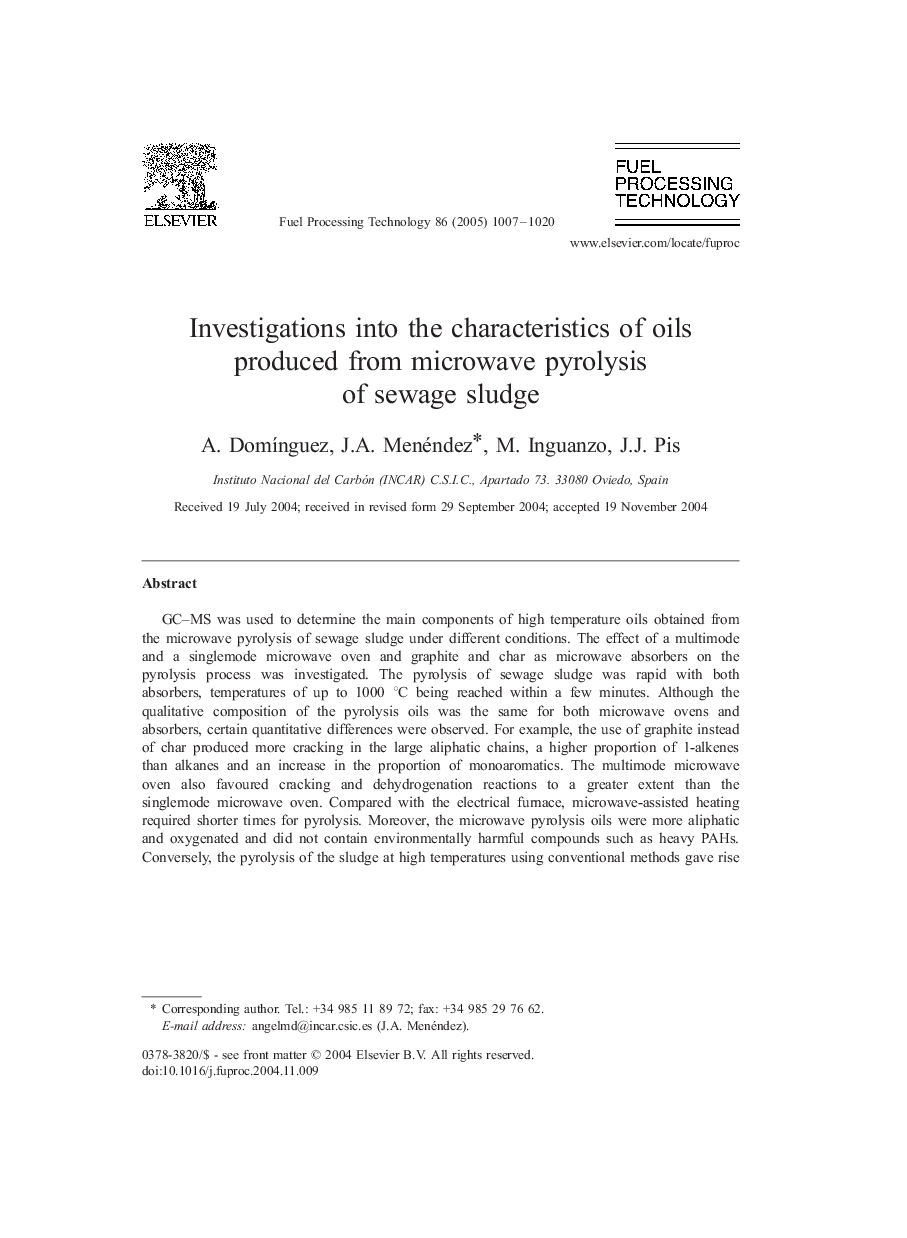| Article ID | Journal | Published Year | Pages | File Type |
|---|---|---|---|---|
| 10274869 | Fuel Processing Technology | 2005 | 14 Pages |
Abstract
GC-MS was used to determine the main components of high temperature oils obtained from the microwave pyrolysis of sewage sludge under different conditions. The effect of a multimode and a singlemode microwave oven and graphite and char as microwave absorbers on the pyrolysis process was investigated. The pyrolysis of sewage sludge was rapid with both absorbers, temperatures of up to 1000 °C being reached within a few minutes. Although the qualitative composition of the pyrolysis oils was the same for both microwave ovens and absorbers, certain quantitative differences were observed. For example, the use of graphite instead of char produced more cracking in the large aliphatic chains, a higher proportion of 1-alkenes than alkanes and an increase in the proportion of monoaromatics. The multimode microwave oven also favoured cracking and dehydrogenation reactions to a greater extent than the singlemode microwave oven. Compared with the electrical furnace, microwave-assisted heating required shorter times for pyrolysis. Moreover, the microwave pyrolysis oils were more aliphatic and oxygenated and did not contain environmentally harmful compounds such as heavy PAHs. Conversely, the pyrolysis of the sludge at high temperatures using conventional methods gave rise to an oil rich in PAHs including compounds such as benzo[e] and benzo[a]pyrene and benzo[ghi]perylene with 5 or 6 aromatic rings.
Related Topics
Physical Sciences and Engineering
Chemical Engineering
Chemical Engineering (General)
Authors
A. DomÃnguez, J.A. Menéndez, M. Inguanzo, J.J. Pis,
